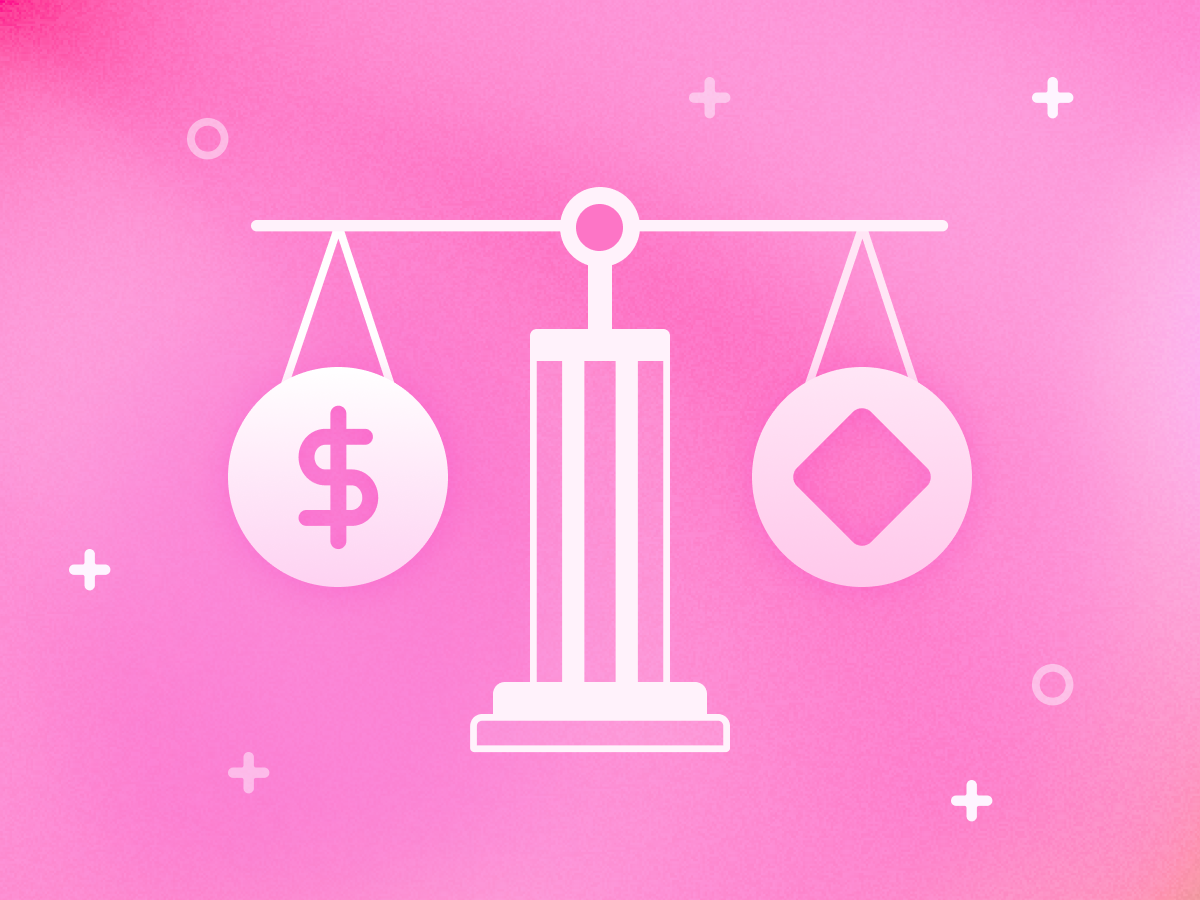Stablecoins are a dependable way to hold, move, and use value onchain. While many cryptocurrencies fluctuate in value, stablecoins are designed to have a stable price. This key feature has helped make stablecoins one of the most versatile and widely used assets in crypto today.
Whether you're swapping tokens, sending funds across wallets, or exploring new networks, stablecoins play a key role in onchain markets.
What is a stablecoin and how does it work?
A stablecoin is a digital asset that is “pegged” to another asset, meaning that it closely follows that asset’s market value. Stablecoins are commonly pegged to currencies like the US dollar or commodities like gold.
Popular stablecoins like USDC, USDT, and DAI are all designed to match the value of the US dollar, but they keep that peg in different ways. USDC is backed by dollars held in reserve by its issuer, while DAI is backed by a reserve of crypto assets (worth more than the amount of DAI in circulation) to help keep its value stable.
For most users, these differences don’t affect how stablecoins are used day to day. Stablecoins can be used in blockchain transactions just like more well-known assets such as ETH or BTC.
Popular uses for stablecoins
Stablecoins have been called crypto’s “killer use case,” but do you wonder what stablecoins are actually used for? They show up in more places than you might think.
-
Onramps and offramps. Stablecoins often serve as the first or last stop when converting between fiat currencies (like the US dollar) and crypto. Many onramps and offramps support stablecoins like USDC because they’re so widely used onchain.
-
Minimizing exposure to crypto volatility. When markets move fast, stablecoins offer a place to maintain stability. Traders and users often swap into stablecoins to take profits, reduce risk and exit positions during volatile markets.
-
Cross-border remittances. Sending stablecoins to family abroad can be significantly cheaper than the global average cost of 6.62% to send remittances, typically done via banks, post offices, mobile operators and money transfer organizations.
-
Avoiding forex fees. Traditional currency exchanges often charge 1-3% in commissions, sometimes more. Stablecoins offer a simpler option. By sending and spending a USD-pegged asset directly, users can skip conversion fees and keep more of their money.
-
Hedging against inflation. Citizens of nations with highly inflationary fiat currencies may prefer to hold US dollar-pegged stablecoins instead of the local currencies, for a more secure store of value.
-
Everyday spending. Cryptocurrencies like stablecoins are increasingly being accepted by more mainstream merchants — from movie theaters to hotels and online retailers — making it easier to use crypto in day-to-day life. Payments giants Visa and Mastercard both announced support for stablecoin transactions, unlocking stablecoin payments at over 150 million merchants.
-
And even employee payments! Stablecoins are steadily becoming a fast, cost-effective alternative to traditional ways of paying salaries or earnings. And because stablecoins payments are borderless, doing so can broaden an employer’s access to the global talent pool.
With a variety of exciting use cases, stablecoin adoption keeps growing. In 2024 alone, stablecoins moved more than $5.5 trillion in adjusted volume across 1.2 billion transactions — equivalent to 42% of Visa’s 2024 payments volume.
As more of the world moves onchain, stablecoins will increasingly play a central role in reshaping how people move, hold, and use money.
Get started with stablecoins
Widely used stablecoins like USDC, USDT, and DAI are simple to move across networks and make it easy to explore and interact with DeFi. With the Uniswap Web App or Uniswap Wallet, acquiring and using stablecoins is a seamless process.
Swap on the Uniswap Web App or get started in the Uniswap Wallet with just a few clicks.



